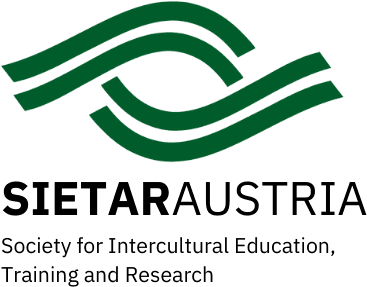
Cultural diversity is continuously increasing, and people are becoming more connected than ever. With the rise of this cultural and linguistic exchange, many would believe that people are becoming more open-minded and acceptant of this change, yet many individuals still face discrimination. Primarily, incoming children learning the school language are encountered with judgments and discontent with respect to their mother tongue. To address this significant issue, we were delighted to welcome Professor Georg Gombos, who shared his objective standpoint toward linguistic discrimination against children.
Georg Gombos is professor for Intercultural Education and Multilingualism at the Department of Educational Sciences at the Alpen Adria University in Klagenfurt. He stated that it is incredibly important to use the knowledge and skills that children bring to school as a resource, and to implement it to increase their potential. However, why are some native languages still suppressed and what actions can teachers take to support children in increasing their linguistic potential?
Linguistic Biases and Discrimination
Studies revealed that there is a connection between a child’s mother tongue, and the dominant language of the country she’s living in, and if both are embraced equally, this can generate better outcomes. Supporting the mother tongue at school is an important measure, which can help to enhance the learning of the dominant language taught in schools. Unfortunately, there are limited resources for every native language within the country. Austria has approximately about 200 languages. Thus, it is practically impossible to provide mother tongue education for every child. Moreover, there are evident biases towards certain languages such as English, Italian, or French, whereas other frequently spoken languages, including Bosnian, Serbian, Turkish, and such are perceived as less prestigious. This creates a power distance and further discourages children with a less favourable mother tongue, this can lead to the development of identity issues. Another problem is that children who grow up multilingual, often have an accent for which they are being ridiculed. These concerns greatly impact the confidence and potential of children to embrace their linguistic diversity. Furthermore, according to Prof. Gombos, teachers are often lacking the resources to provide support for such instances. Hence, if these issues continue, we are moving further away from creating a multilingual environment, which respects and embraces all languages.
Respect, Appreciation, and Acceptance
Upon discussing the most significant issues, what measures can we take to address these problems? Prof. Gombos emphasized the first approach toward combatting these linguistic discriminations starts with respect. If negative attitudes are being expressed, children will become more reluctant towards their mother tongue. It will further influence their skills and generate negative feelings against their native language. As a prevention measure, teachers must invite every language represented in the classroom, this delivers a sense of appreciation and belonging for the young students. Furthermore, educational institutions should facilitate the contact between teachers and parents for the purpose of gaining more insights and understanding of the mother tongue, and to improve the teaching system for children. In addition, parents are also invited to provide sufficient and effective methods to strengthen the native language. Lastly, as teachers are expected to respect linguistic diversity, individuals who have a different mother tongue from the state language must also show respect.
As parents, it is significant to deliver the necessity of acquiring the school language to the children. However, according to Prof. Gombos, it is the teachers’ responsibility to teach this language without the parents getting involved in a way that would influence the learning process negatively. Lastly, it is important to realize that bilinguals or multilinguals have completely different experiences in comparison to monolinguals. For a teacher to provide effective education, they must offer space to discuss these experiences in order to enhance understanding and take appropriate steps.
Conclusion
Open-mindedness with respect to languages facilitates learning, and generates a multicultural and linguistically diverse environment that enhances the competencies and knowledge of each individual. Diversity is growing considerably, yet we are still far away from a culture of multilingualism. Many requirements have still not been met, which hinders the efficiency of learning and acquiring languages. Moreover, power distance, biases, as well as prejudice towards certain languages and cultures generates an environment of negative attitudes, misunderstandings, and discrimination. Prof. Gombos suggests sharing our experiences. If linguistic diversity is embraced, individuals become more interconnected and create an atmosphere of appreciation and acceptance of multilingualism.
“Language shapes the way we think and determines what we can think about.” – Benjamin Lee Whorf.
Final words:
SIETAR Austria and The Multilingual Garden would like to express their appreciation and gratitude to Prof. Georg Gombos for informing us about these critical and vital issues about linguistic discrimination.
You can find further information about Prof. Georg Gombos at:
https://www.aau.at/team/gombos-georg/
Furthermore, we are grateful to Dr. Karin Martin for leading The Multilingual Garden and continually acknowledging the value of multilingualism in our societies.
References and Sources:
YouTube Link to Expert Talk with Prof. Georg Gombos:
Information about The Multilingual Garden:
https://www.linkedin.com/company/the-multilingual-garden/?trk=ppro_cprof&originalSubdomain=at
Picture of Prof. Georg Gombos:
https://presseflash.at/wp-content/uploads/2017/03/Gombos_Georg%20006R13x18-313×434.jpg
Cover image link:
http://s3.amazonaws.com/themorning-aruna/wp-content/uploads/2020/02/11125634/image.png


